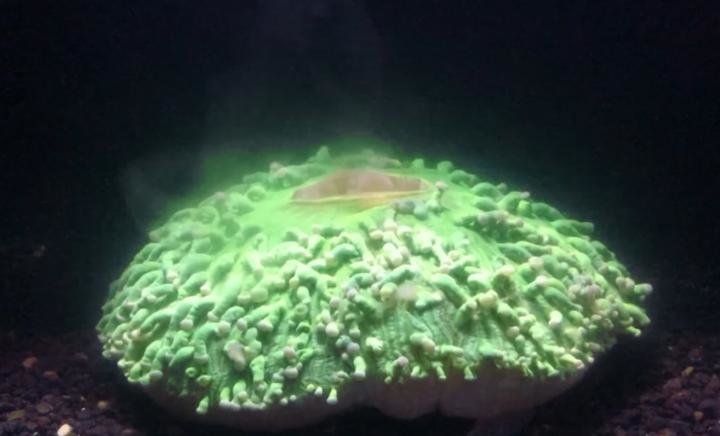We know what the after effect of coral bleaching looks like, but now we are able to know what actually happens during this process thanks to this time-lapse video of coral dumping its zooxanthellae as a reaction to the stress of rising water temps.
The video of this plate coral (Heliofungia actiniformis) shows the coral ditching its symbiotic algae, Symbiodinium, as it can no longer afford to expend energy hosting its tenant, which also gives the coral its vibrant color. In the video you can see the coral actually inflate to over 300% of its original body size before violently ejecting the green algae from its mouth providing scientists with valuable insight into the coral bleaching process.
“Mass coral bleaching events are a concern for scientists globally with recent events on the Great Barrier Reef highlighting the threat of elevated water temperatures to the heath of reef ecosystems,” Luke Nothdurft, of Queensland University of Technology (QUT) in Brisbane, Australia, said in a statement.
Nothdurft and a team of scientists at QUT put H. actiniformis in aquariums where they raised the temperature of the water over a period of 12 hours, from 79 to 90 degrees Fahrenheit. Within hours of the temperature rising, the corals began to inflate their bodies and then “suddenly and violently contracting and ejecting Symbiodinium through their oral openings over the four- to eight-day duration of the experiments,” Nothdurft said in the statement.
So what happens next? If the heat stress goes away, the algae may return to the coral. If not? “If the Symbiodinium is removed from the host and does not recolonize quickly, the corals can die,” Nothdurft said.
The results of the study was published online Aug. 5 in the journal Coral Reefs.
[via Live Science]



